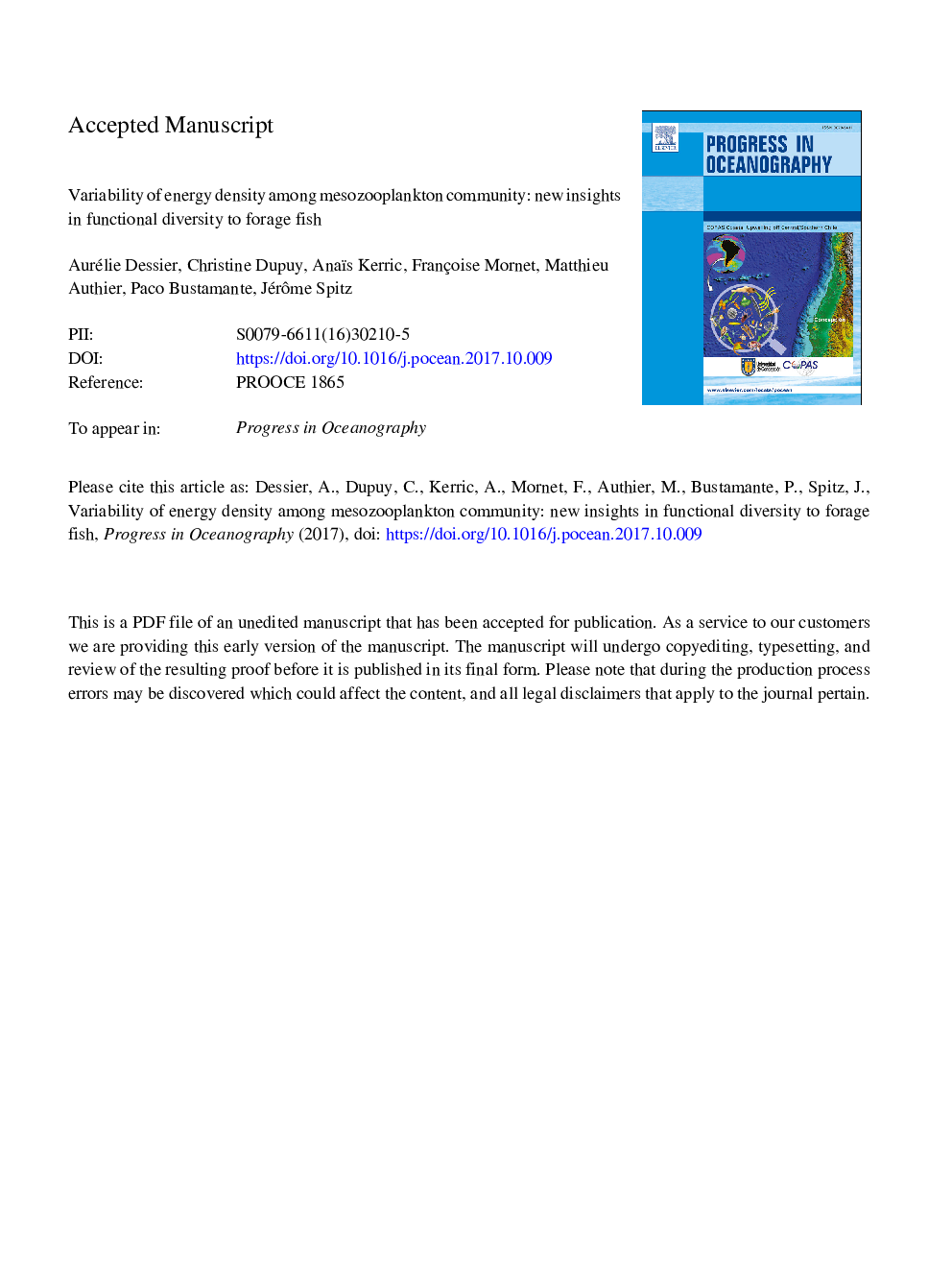| Article ID | Journal | Published Year | Pages | File Type |
|---|---|---|---|---|
| 8886596 | Progress in Oceanography | 2018 | 35 Pages |
Abstract
To explore some aspects of mesozooplankton functional diversity, this study quantified energy density during the springtime in the Bay of Biscay both between different species and between different size-classes. Energy densities of copepod species (Centropages typicus, Anomalocera patersoni, Calanus helgolandicus, and Labidocera wollastoni), as well as anchovy eggs (Engraulis encrasicolus) ranged from 0.5 to 6.7â¯kJ/g wet weight (ww). Considering size-classes, energy densities varied from 0.74 to 1.26â¯kJ/g ww. Energy density of C. helgolandicus exhibited a spatial pattern with the highest values in the plume of the Gironde estuary. In contrast, no spatial pattern of energy density has been detected considering size-classes. Our results showed that the mesozooplankton cannot be considered as a homogeneous resource in terms of quality. During spring, some species and some geographical areas seem thus to be more profitable to predators than others. We argued that the energy density is a key functional trait of mesozooplankton species. Finally, we discussed how interspecific and spatial variability of energy density among the mesozooplankton community can have important implications on fish population dynamics.
Related Topics
Physical Sciences and Engineering
Earth and Planetary Sciences
Geology
Authors
Aurélie Dessier, Christine Dupuy, Anaïs Kerric, Françoise Mornet, Matthieu Authier, Paco Bustamante, Jérôme Spitz,
